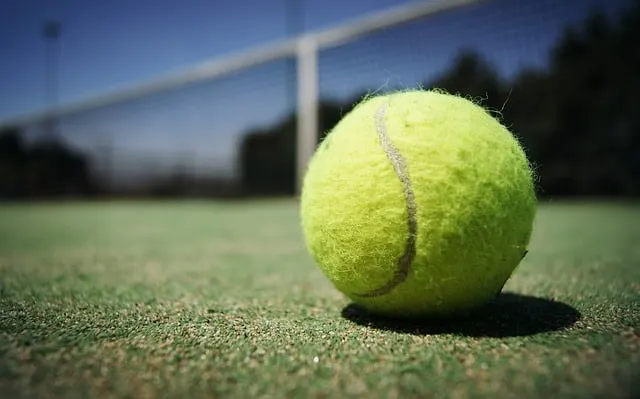
I have to say this looks like a strange sight to me 🙂
It’s something I never saw in the classroom when I was a boy, but it seems putting tennis balls on chair legs certainly happens at some schools.
Why do teachers do this? What’s the reason for it?
Why do teachers put tennis balls on chairs?
Here are 4 reasons why putting tennis balls on chairs is not such a bad idea.
Reduces noise
After doing a little digging online, the main reason is actually quite simple.
It reduces the noise when pupils are sliding their chairs about on the floor.
If you’ve ever taken an exam in a school hall and heard the sound of chairs scraping and scratching against a wooden floor, using tennis balls to numb the noise actually seems a good idea.
Although these noises didn’t bother me when I was at school, maybe if I was a teacher hearing it day after day, it might drive me mad!
Better concentration for the pupils
As a consequence of a quieter classroom, pupils can concentrate better in lessons which can help them progress quicker in various subjects.
Easier to slide the chairs around
According to Stephen Fields, a spokesman for the Windsor-Essex Catholic District School Board, using tennis balls on chairs “makes it a little easier for smaller students to slide them around when doing group work”.
Protects the floor
Finally, if a school has just installed a brand new floor in a classroom or school hall, the last thing you want are loads of scratch marks from chairs and desks. Using tennis balls can mitigate the risk of damaging the floor and annoying the school governors!

How do you put tennis balls on chair legs?
Here’s the process for putting tennis balls on chair legs:
- Take 4 used tennis balls.
- Make a cross mark on top of the first tennis ball using a marker pen.
- Make a hole in the centre of the ‘X’ using a drill or screwdriver.
- Cut slits along the cross marks using a sharp utensil, like a Stanley knife.
- Remove any liquid inside the ball.
- Repeat the process with the 3 other balls and attach to the chair legs.
Are tennis balls toxic?
Although tennis balls used properly are fine to use, they do contain respiratory irritants once they’re opened up. The core contains latex which can cause breathing difficulties for some pupils when it’s in a dust form.
This came up in an indoor air quality assessment by the Massachusetts Department of Public Health for East Gloucester Elementary School
The report found that when the chair leg rubs on the inside of the tennis balls, latex dust can be released into the air, which can be an irritant for pupils with breathing difficulties.
It should be said that the report also mentions other things in classrooms which can release irritants when inhaled, such as cleaning products, furniture polish, marker pens and board cleaners.
Seems impossible to escape all this unless children have lessons outside!
Alternatives to tennis balls on chairs
Fortunately, if the thought of cutting loads of tennis balls to attach to all the chair legs in a classroom fills you with dread, there are some other options:
Install carpet
Ok, so this isn’t the cheapest option, and probably not the most practical in most school classrooms, but you can always install carpet. Not only will it be dampen the sound of chairs sliding on the floor, it can even improve the acoustics of the room by absorbing other noises and make the room have less of an echo.
It’s also more comfortable, especially for younger kids who may wish to sit on the floor during an activity.
Felt Pads
This is a cheaper option. Felt pads are little stickers you can put on the bottom of chair legs with felt on the other side. They’ll likely lose their adhesiveness over time, but they are cheap and easy to replace.
Rubber Leg Tips
You can also attach rubber tips to the end of chair legs instead of tennis balls. These will reduce the noise from sliding on chairs and protect the floor surface.
